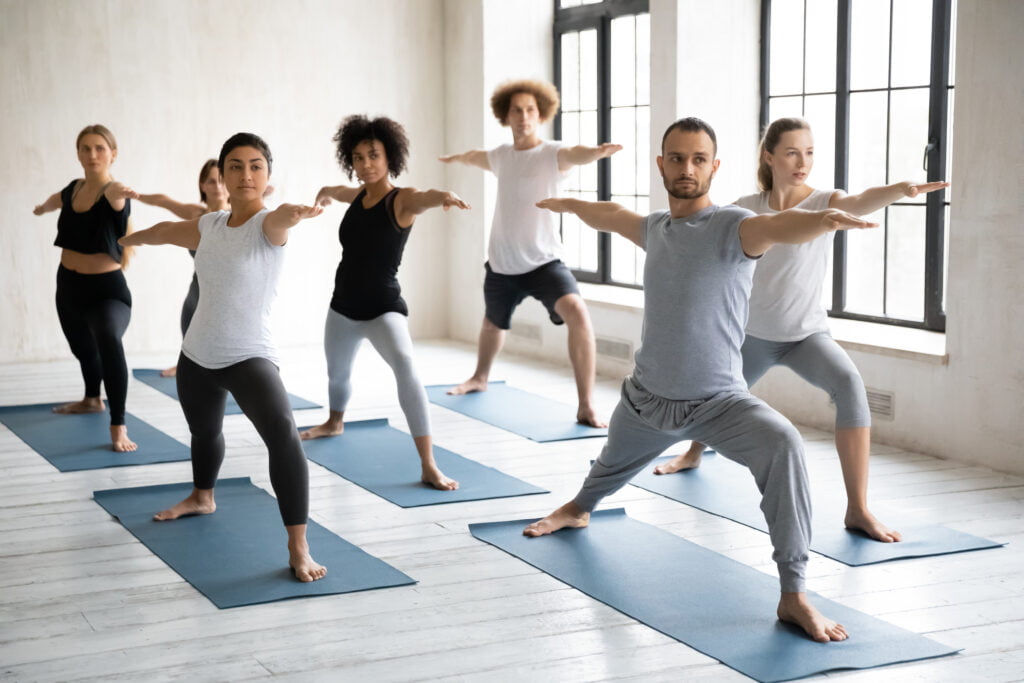How yoga can help ease your pain


Yoga is a helpful tool for physical and mental well-being. It combines stretching, strength, and meditation to ease stress in the body and promote strength, flexibility, and relaxation. But, did you know yoga also has the potential to help you with your pain?
There have been a number of studies published on the association between yoga and its effects on low back pain and chronic pain.123 In each study, there were benefits observed both in the short-term and long-term to varying degrees. The bottom line was that an element of active care, which can include yoga, can improve outcomes when you’re suffering from pain.
Taking an active role in your health has been shown to improve your pain more effectively. With yoga, the benefits come from the combination of controlled breathing, body and posture awareness, meditation, strength, and flexibility.
Studies continue to investigate the benefits of mind-body exercises like yoga. For right now, there’s no harm in trying this type of exercise out to help complement your pain management program as long as you practice safely.
It’s important to take safety steps when you undertake any new exercise, particularly if you have any problem areas. Here are a few safety tips that are good for both new and seasoned yogis3:
Yoga Safety Tips
- Practice with a pro: Always take classes with a certified instructor. Often, they’ll go through a number of modifications throughout a class to accommodate different levels of fitness and flexibility.
- Speak up: Let your instructor know about injuries or concerns before class. They might be able to offer you specific modifications while the class is in progress.
- Don’t be afraid to stop: Sometimes, modifications don’t work for you. Stop doing any poses/positions that make the pain worse. You can wait until the next posture if something is causing you pain. There should be no pain in yoga.
- Consult an expert: If you plan on doing yoga at home, work with or consult an instructor first. Also, consider consulting a healthcare provider who is familiar with your case and can guide you through which areas to stretch and strengthen and which to avoid.
Yoga is just one form of active care. A combination of active (e.g., exercise) and passive (e.g., treatment from a healthcare provider) care have been found to be the most effective in treating pain.
There are a number of different activities that fall under the umbrella of active care. To know what exercises or postures are right for you, consult your family chiropractor.
References
1. Chou R, Deyo R, Friedly J, et al. Nonpharmacologic therapies for low back pain: a systematic review for an American College of Physicians Clinical Practice Guideline. Ann Intern Med. 2017;166(7):493-505. doi:7326/m16-2459.
2. Brämberg E, Bergström G, Jensen I, Hagberg J, Kwak L. Effects of yoga, strength training and advice on back pain: a randomized controlled trial. BMC Musculoskeletal Disorders. 2017;18:132. doi:1186/s12891-017-1497-1.
3. Achilefu A, Joshi K, Meier M, McCarthy LH. Yoga and other meditative movement therapies to reduce chronic pain. J Okla State Med Assoc. 2017;110(1):14-6.